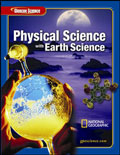1 A) It is moving toward Earth. B) It is moving very fast. C) It is slowing down. D) It is moving away from Earth. 2 A) 2 seconds B) 10 hours C) 1 day D) 8 minutes 3 <a onClick="window.open('/olcweb/cgi/pluginpop.cgi?it=jpg::::/sites/dl/free/0078685540/165465/524_752_q3.jpg','popWin', 'width=NaN,height=NaN,resizable,scrollbars');" href="#"><img valign="absmiddle" height="16" width="16" border="0" src="/olcweb/styles/shared/linkicons/image.gif"> (15.0K)</a>
A) Earth B) the Sun C) the Moon D) Saturn 4 A) black hole B) galaxy C) constellation D) supergiant 5 A) black hole B) neutron star C) black dwarf D) nebula 6 A) Arp's Galaxy B) Milky Way Galaxy C) Barnard's Galaxy D) Andromeda Galaxy 7 A) Alpha Centuri B) Betelgeuse C) Sirius D) Pleiades 8 A) galaxy clusters, galaxies, stars, universe B) stars, galaxy, galaxy cluster, universe C) universe, stars, galaxies, galaxy clusters D) universe, galaxy cluster, galaxy, stars 9 <a onClick="window.open('/olcweb/cgi/pluginpop.cgi?it=gif::::/sites/dl/free/0078685540/165465/524_752_q9_q10.gif','popWin', 'width=NaN,height=NaN,resizable,scrollbars');" href="#"><img valign="absmiddle" height="16" width="16" border="0" src="/olcweb/styles/shared/linkicons/image.gif"> (5.0K)</a>
A) hydrogen B) helium C) oxygen D) carbon 10 <a onClick="window.open('/olcweb/cgi/pluginpop.cgi?it=gif::::/sites/dl/free/0078685540/165465/524_752_q9_q10.gif','popWin', 'width=NaN,height=NaN,resizable,scrollbars');" href="#"><img valign="absmiddle" height="16" width="16" border="0" src="/olcweb/styles/shared/linkicons/image.gif"> (5.0K)</a>
A) The percentage of hydrogen will increase. B) The percentage of helium will decrease. C) The percentage of oxygen will increase. D) The percentage of hydrogen will decrease.





